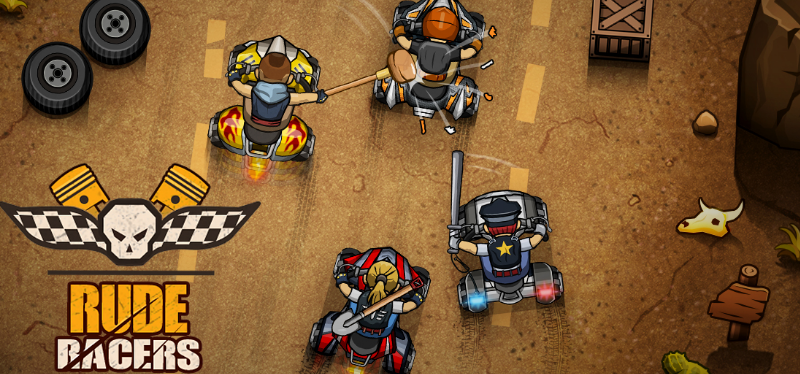Somewhere between the grit of Mad Max and the cartoony antics of Speed Racers, Rude Racers is an arcady racing game that is enjoyable as much as it is demoralizing.
Type: Single-player, Early Access
Genre: Racing, Action
Developer: Famous Dogg Studio
Publisher: Famous Dogg Studio
Release date: 24 October, 2019


As someone who strictly sticks to the rules when driving, racing games are perhaps the healthiest outlet for any road rage, which is perhaps why the ones that involve carnage are the most appealing. Burnout and Full Auto are the first examples that come to mind, and, while those games have some of the most satisfying destructive physics, you never get to focus your aggression against the driver. Even with Mario Kart-style games where you can see the drivers, the violence is toned down or the weapons are directed towards the vehicles rather than the real culprits. (That’s a healthy attitude, right?)
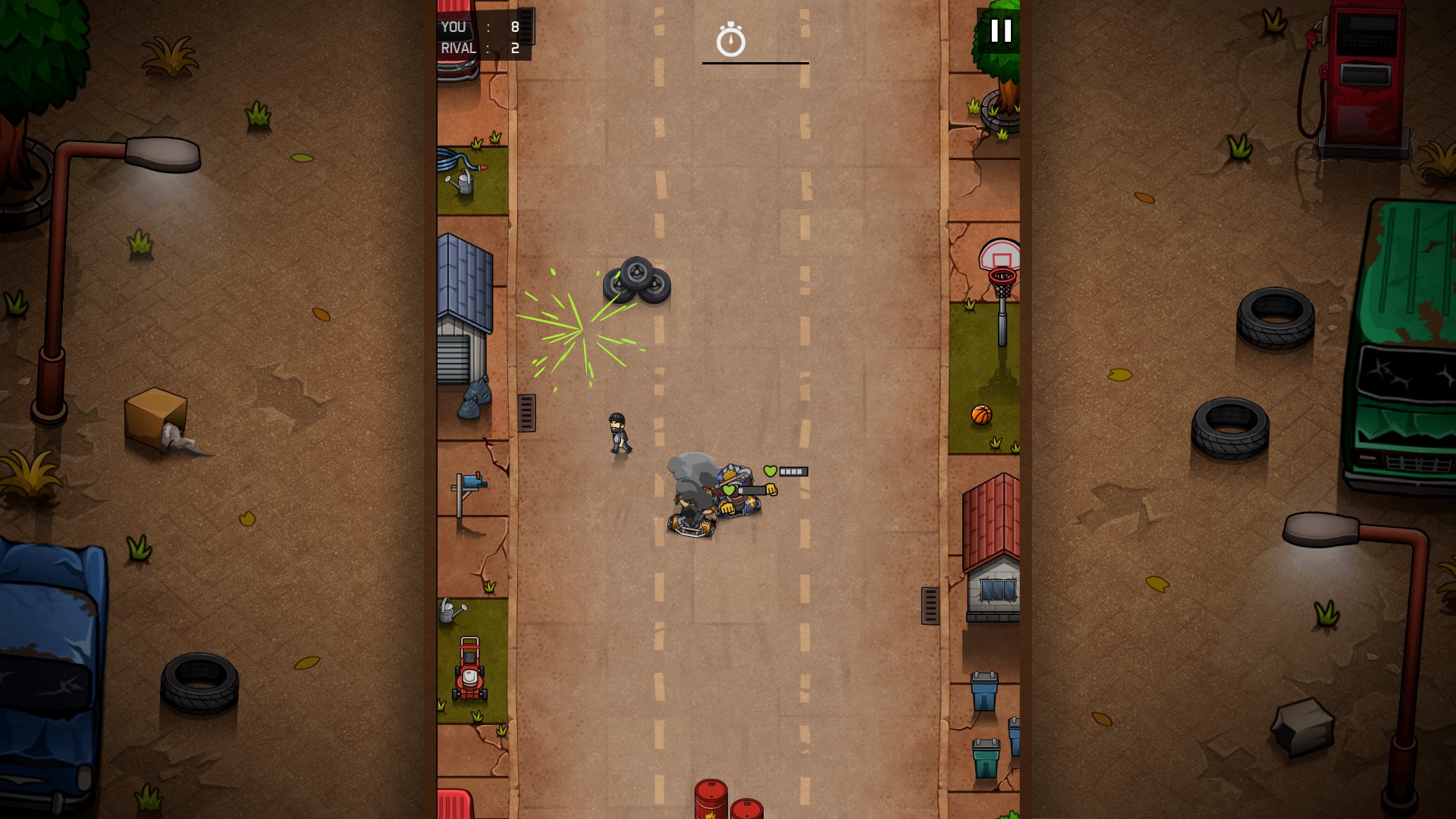
All hyperbolic statements aside, Rude Racers is a compromise between both attitudes to sate my inner demons on the road. Somewhere between the grit of Mad Max and the cartoony, zany antics of Speed Racers, Rude Racers is a simple, arcade racing game that can be as enjoyable as much as it can be demoralizing from defeat. You won’t ever get too upset where another race won’t fix that problem.
The Need for Speed? More Like the Need for Killing
Now my emphasis on combat is a deliberate choice because Rude Racers is less of a traditional racing game and more so a combat-focused game set during a race. While the many other examples mentioned beforehand, and a large part of all arcade-style racing games outside of Twisted Metal, have some amount of combat, those games still play by the same rules of placing first to win. After completing three out of the five available seasons, which introduce new modes and new obstacles, the added subtitle does warrant its existence despite how extraneous it may first sound.
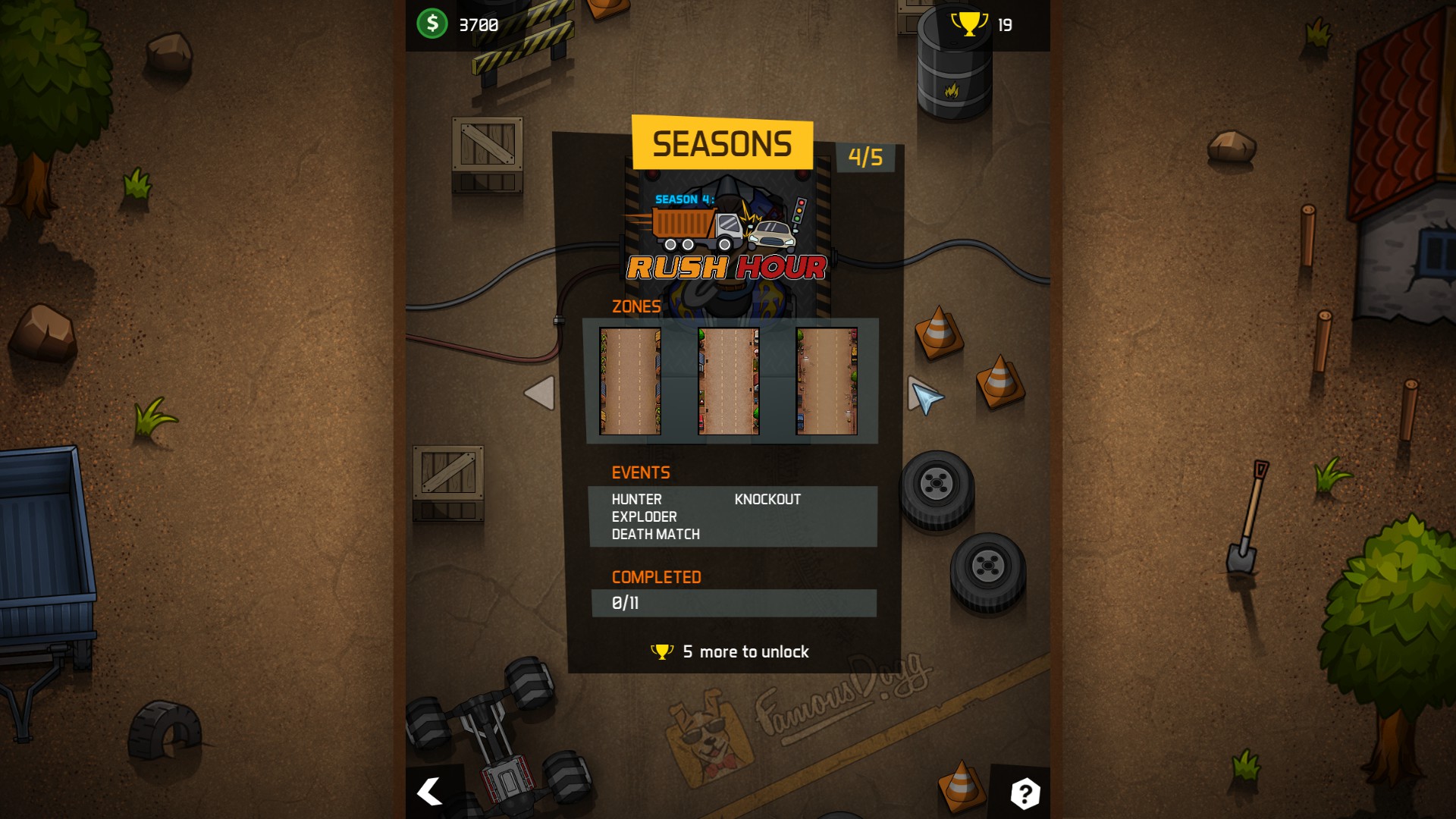
Seasons are structured much differently than speed-class tiers or different map layouts more common to this genre. In total, there are different twelve different modes scattered across all five seasons ranging from simple combat or racing challenges. Each season offers two to three levels for each mode, but some of the later inclusions have fewer opportunities than the more ubiquitous game types. The maps themselves undergo some slight changes like added traffic and law enforcement barriers and enemies, but the real deviations for each season come from the new obstacles added into the maps. What starts off as a fairly easy game will quickly ramp up into an excuse for vehicular manslaughter.
On first impressions, Season 1 begins with simple racing challenges before quickly moving towards Deathmatch; Knockout, a time-based mode where the last driver is disqualified every twenty seconds; and Pizza Delivery, a relatively simple mode where your goal is to knock out as many pizza mopeds as possible before the timer ends. While these modes do offer some variety, there is nothing stopping you from simply killing the opponents and winning the match more quickly. In many cases, especially if you are replaying the events in the future to earn some extra cash, you will ignore the main objective if there is a faster means of success. However, the main point is that you will likely not fail most of these challenges, even on the Hard setting.
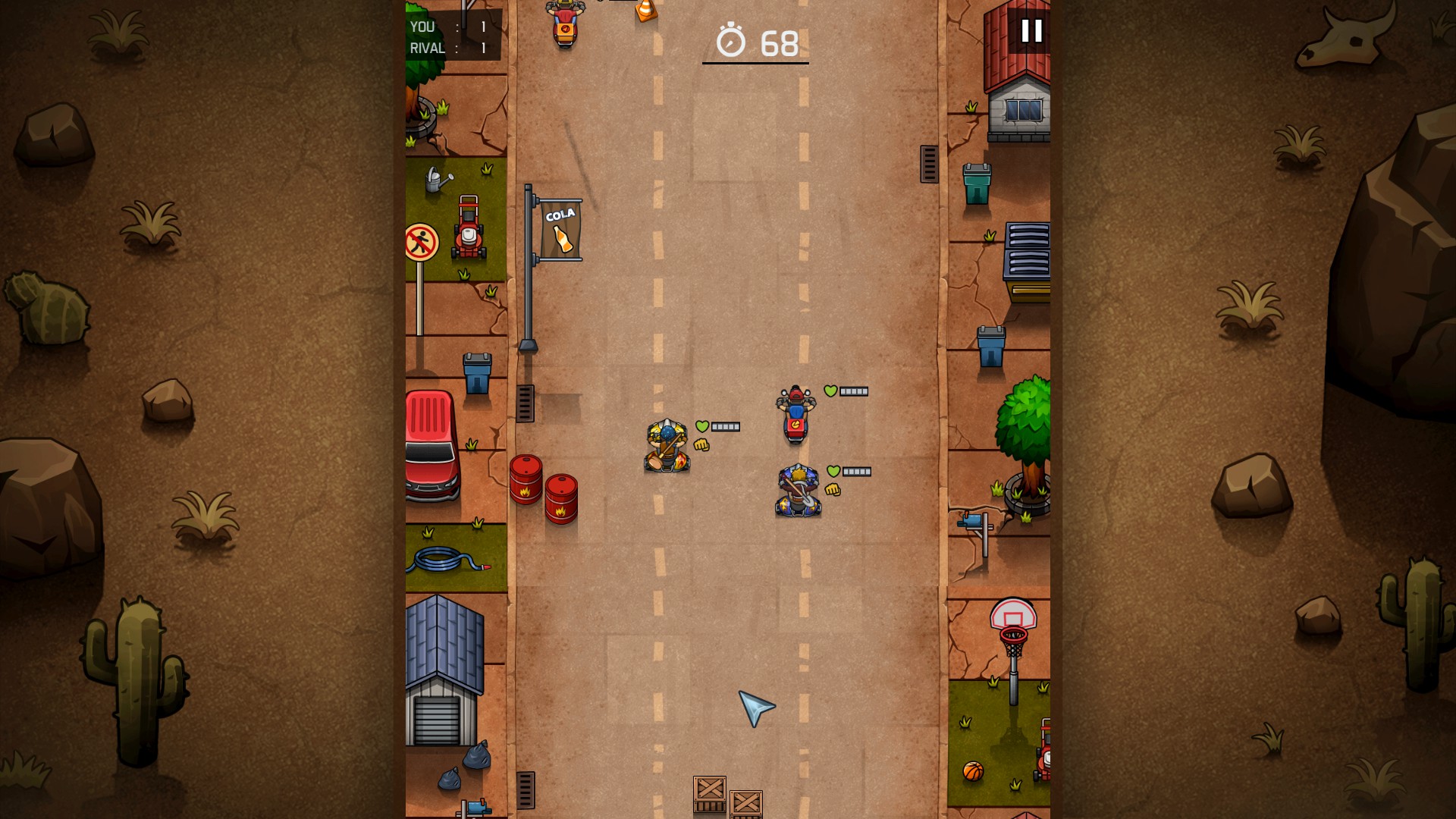
Thankfully, everything afterwards is where the game’s grit starts to bite back. From Season 2, almost all the stages besides the “Head 2 Head” mode focuses on the combat aspect of the game, and the repetition of previous modes is replaced by more diligent AI. By the end of Season 2 and the entirety of Season 3, the local authorities are introduced to shake up the previous two seasons. For Season 4, the game introduces passive traffic obstacles in addition to the police forces from before. As demonstrated by these examples, every previous challenge returns in some fashion in order to introduce something familiar while also keeping the game ever-changing.
The result of Rude Racer’s structure is that it ideally gives the game an ever-increasing difficulty curve to keep the player interested. Unfortunately, in the current implementation, there are several aspects of the core gameplay that brings the fairness of the game into question.
Going to Need Some Tune-Ups Over the Next Few Months
By now, you have probably noticed that I have yet to go into detail about how Rude Racers plays. The short answer is that it directly ties into the game’s balancing problem, and it’s partially due to the simplicity of the core gameplay. However, there are far greater problems that work in tandem with this one issue.
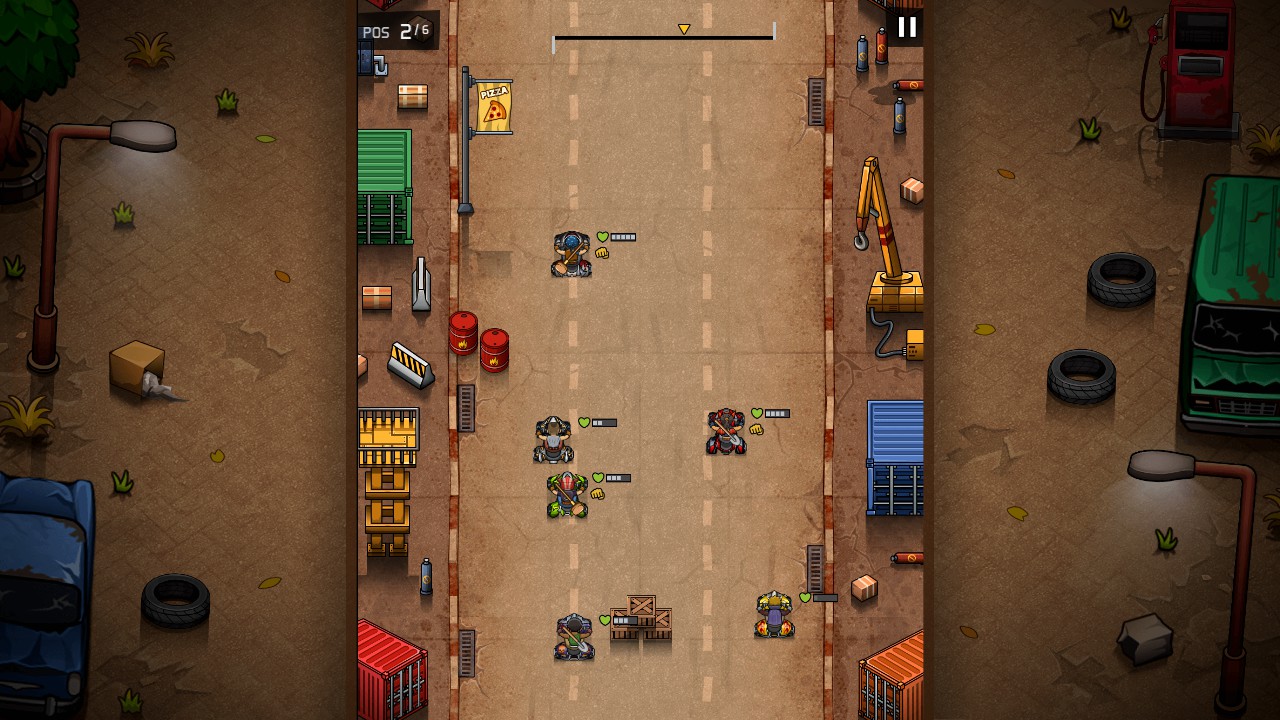
The controls themselves are fairly basic: You move the arrow-keys or the joystick in the direction you want to go, and you have one button or key assigned for attacks and another one for items. While almost all racing games are fairly easy to pick up, there are other systems completely ignored in this game such as the player controlling his or her acceleration as well as being able to drift for extra speed. These automated aspects make Rude Racers less of a racing game due to the fact that there is very little skill involved in maintaining the player’s speed. In many other ways, however, the game makes the importance of speed trivial.
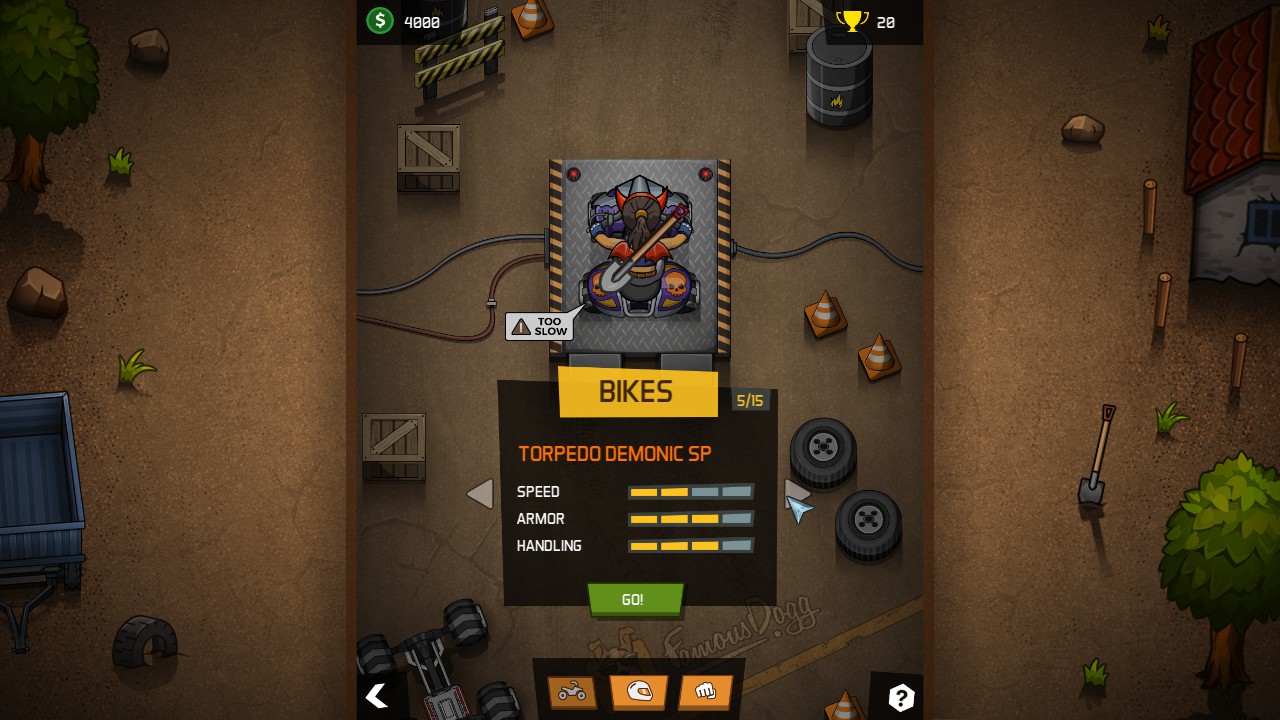
Ignoring the obvious rebuttal that the game’s tracks are all straight pathways, the real problem is that the game’s speed feels too artificial. The simple rule of maintaining speed is to knock your opponents out of the way and to avoid hitting hazards on the road. You cannot gain speed by trailing behind your opponents; you will always start every race in last place to work your way up to the lead, and all too often the enemies will simply catch up to you. On the one hand, this limitation makes every race a close match, but it’s never because the player played well enough to earn that victory. More often, you feel like it was dumb luck.
In some modes, however, you have to exploit this aspect of the gameplay. Whenever you are timed to kill a certain amount of opponents, you have to spend the first ten to fifteen seconds to catch up to the targets. Next, you have to exploit the AI’s rubber-banding by knocking them out the way so they will catch up to you and get back into your weapon’s range. If you don’t play this way, then you’ll never be able to take out both targets consistently because you have to wait another five to ten seconds (or even more if you hit something) to catch up. However, there is another means to gain speed, items.
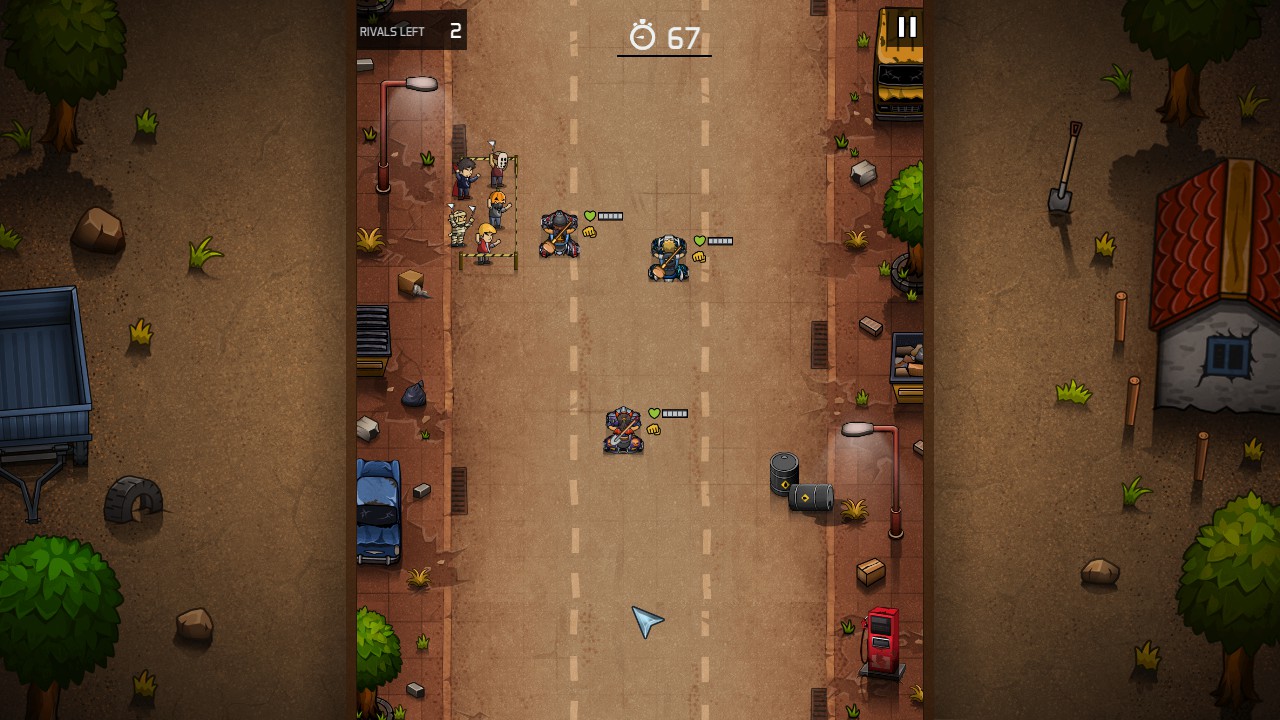
Now, you might reasonably expect that if there are items in the games a la Mario Kart, then you have another means to catch up in a race. Except that is not how these items are implemented; they are all purchasable with in-game currency before the start of the event. For one or two modes that require you to outlast the opponents or to risk-taking more damage, the shield ability will come in handy. During races or time-challenges, the speed boosters also have some purpose. The oil cans, however, will so rarely ever need to be used, and they also provide so little of a benefit that you’ll likely forget they exist besides the fact that you can buy them.
Although the PC version doesn’t let you purchase these in-game currencies with real money, I don’t find the implementation detrimental to the gameplay. Even after completing a season, you can always replay those same events or newer ones on Easy, Normal or Hard to earn more than enough cash to buy items for several attempts. (For reference, an average race nets you between $300 to $1000 cash depending on the season and the difficulty rating, and most items cost you $50 – 150.) You can also play the randomized Quickmatches, which will let you try out those items at no charge. All these items really serve to accomplish is to give you a boost, but the game does feel somewhat toned down without those items available on the tracks.
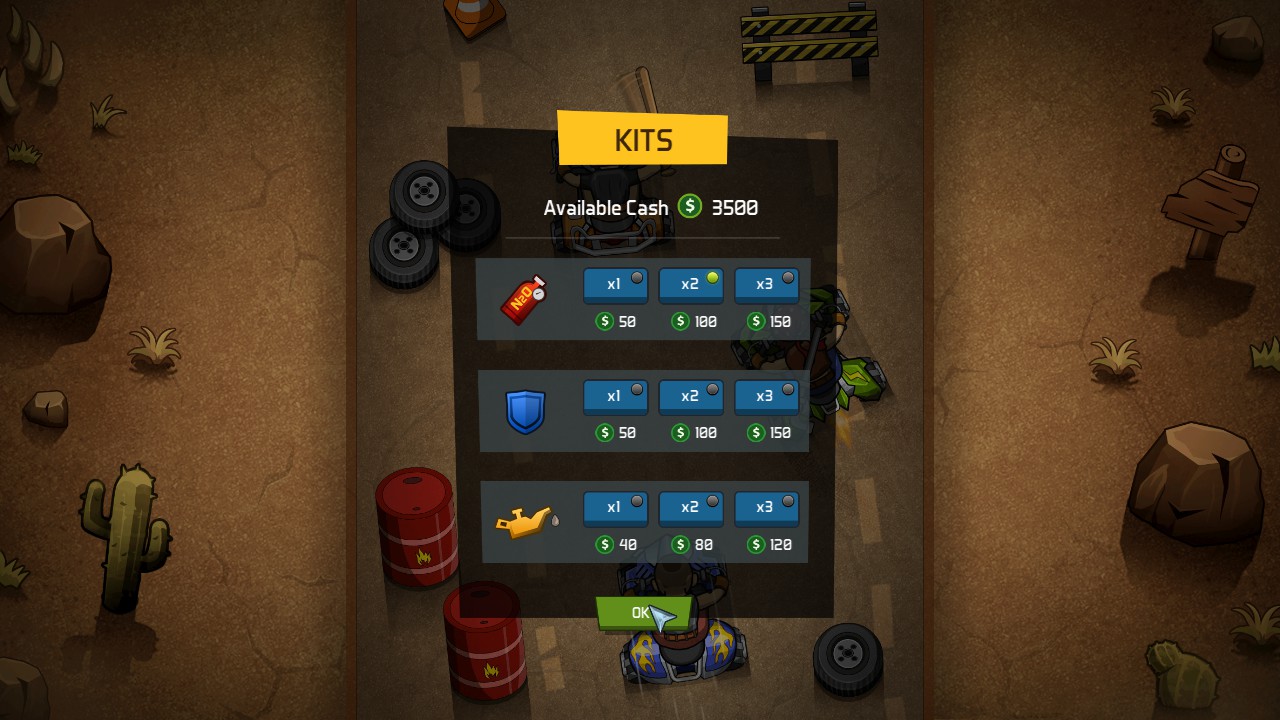
Instead of buying these items when in a pinch, you should complete the harder stages on Easy and save up any in-game rewards for improvements to your bikes and weapons. Normally, upgrades are viewed as being something completely optional, but these new additions are just simply better versions of your existing gear. This aspect never comes across as a grind because you’ll only unlock the first proper bike needed to compete in the next Season. Although, as one example of the problems with this system, when you get midway into Season 2 you can unlock the next season with no bikes able to keep up with the AI. This aspect feels more like an oversight because Season 3 and 4 have the same requirements for speed, which gives you more options to choose your own pace.
Now most of these issues that I have illustrated are more so blemishes than anything that tarnishes the game itself. As someone who prefers upgrade systems that make early equipment viable as late-game equipment, the problems in Rude Racers irk me more than they probably should because they keep the game a tough experience all throughout.
Verdict: Nice Guys Finish Last, but Nice Devs Place First
In spite of these balancing and progression problems, Rude Racers has already undergone several improvements, technical and gameplay, within its closed beta to warrant some healthy optimism. For example, the tracks themselves have been slightly extended to hide the obvious mobile influence, which also makes the hazards and the enemies easier to maneuver around on later seasons. Additionally, there once was a weird bug that crashed the game while playing the game at 60 FPS, and the added smoothness makes each in-game victory much more satisfying. Even on top of all this work, the game has also released some free Halloween-themed DLC if you want to get an early start for next year.
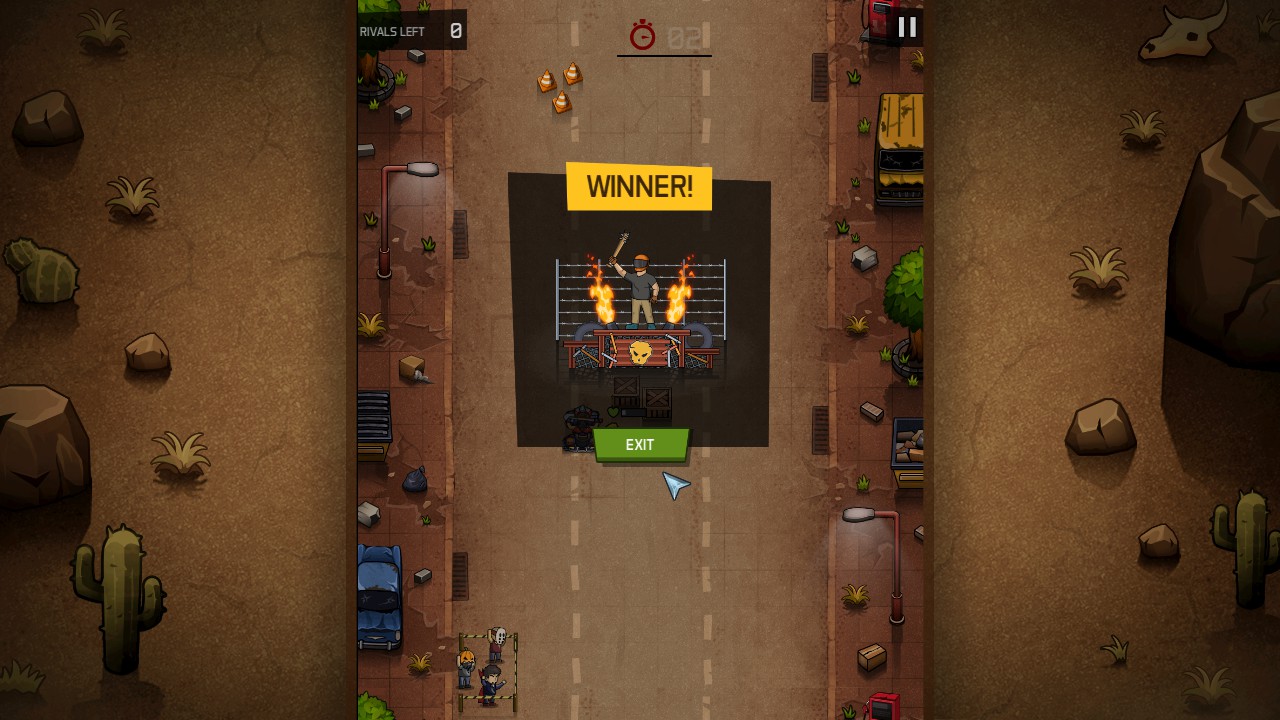
The result of all this extra care in closed beta as well as the change of plans to launch this game into Early Access gives me confidence that the developers will take their time with this game. While the name itself and the simple visuals might give off the impression of a rushed job, it’s clear that the developers will take their time to make Rude Racers a better game. This game won’t ever likely reach the highs of Burnout vehicular manslaughter nor the outlandish, chaotic thrill of Mario Kart, but Rude Racers is a smaller experience of those two flavors of fun.

